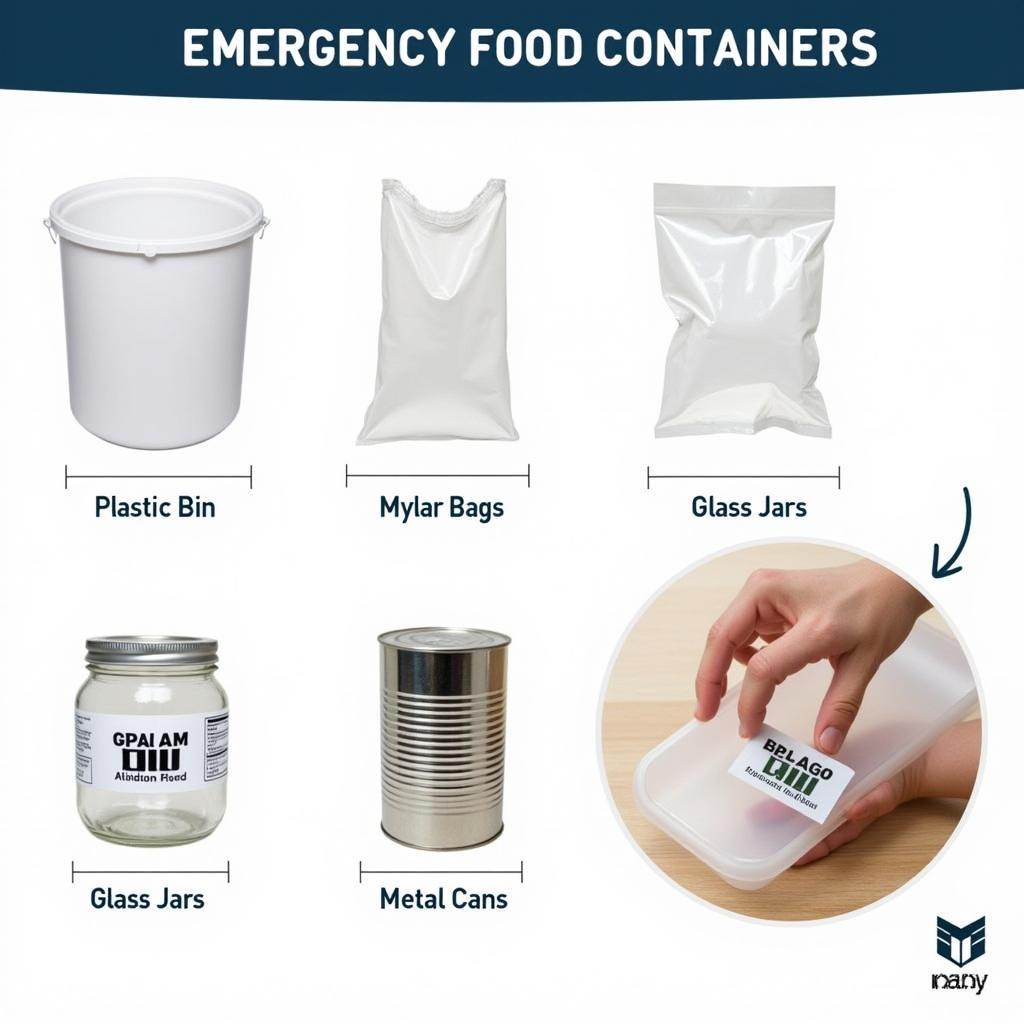Emergency Food Containers are crucial for ensuring you and your family have access to sustenance during unexpected events. Whether it’s a natural disaster, power outage, or job loss, having a well-stocked supply of food in reliable containers can provide peace of mind. emergency food storage containers are designed to keep your food safe and fresh for extended periods. This comprehensive guide will explore everything you need to know about choosing, using, and maintaining emergency food containers.
Choosing the Right Emergency Food Containers
Selecting the appropriate emergency food containers is paramount for long-term food storage. Factors to consider include material, size, and airtightness.
Material Matters: Durability and Safety
Different materials offer varying levels of protection and longevity. Common choices include:
- Plastic: Lightweight, affordable, and readily available. Look for food-grade, BPA-free options.
- Mylar bags: Excellent oxygen barriers, ideal for long-term storage of dry goods like grains and beans.
- Glass jars: Durable and reusable, suitable for storing various foods but can be heavy and prone to breakage.
- Metal cans: Robust and offer excellent protection against pests and moisture, but can be susceptible to rust if not properly sealed.
 Emergency Food Container Materials
Emergency Food Container Materials
Sizing Up Your Needs: Quantity and Variety
Consider the number of people you need to feed and the duration you want your supplies to last. Store a variety of foods to ensure a balanced diet. You might need catering food containers for larger groups.
Airtight is the Right Way: Protecting Against Spoilage
An airtight seal is crucial for preventing spoilage and maintaining the nutritional value of your stored food. Look for containers with secure lids, gaskets, or O-rings.
Packing and Storing Your Emergency Food Supply
Proper packing and storage techniques are essential for maximizing the shelf life of your food.
Oxygen Absorbers: Extending Shelf Life
Oxygen absorbers are small packets that remove oxygen from sealed containers, significantly extending the shelf life of dry foods.
Cool, Dark, and Dry: The Ideal Storage Environment
Store your emergency food containers in a cool, dark, and dry place to prevent spoilage and maintain quality. A basement or pantry is typically a good choice. Consider a 72 hour food supply for immediate needs.
Maintaining Your Emergency Food Containers
Regularly inspect your emergency food containers for signs of damage or deterioration. Rotate your food supplies to ensure you’re using the oldest items first. You can even create a doomsday food kit for extreme scenarios.
Rotation is Key: First In, First Out (FIFO)
The FIFO method ensures that you’re consuming the oldest food first, minimizing waste and maximizing freshness. A 1 gallon food grade bucket with lid can be great for storing bulk items.
“Rotating your food storage is like paying yourself back for your preparedness efforts,” says renowned survival expert, Sarah Miller, Ph.D. “It prevents waste and keeps your supplies fresh and nutritious.”
Conclusion
Emergency food containers are an investment in your family’s well-being. Choosing the right containers, packing them correctly, and storing them properly will ensure you have access to safe and nutritious food during emergencies.
FAQs
- What types of food are best for long-term storage?
- How long can food be stored in emergency containers?
- Where is the best place to store emergency food containers?
- How often should I rotate my food supply?
- What are oxygen absorbers and how do they work?
- Are Mylar bags safe for food storage?
- Can I reuse emergency food containers?
Have more questions? Check out more articles on our website.
Need help? Contact us at Phone: 02437655121, Email: minacones@gmail.com or visit us at 3PGH+8R9, ĐT70A, thôn Trung, Bắc Từ Liêm, Hà Nội, Việt Nam. We have a 24/7 customer service team.